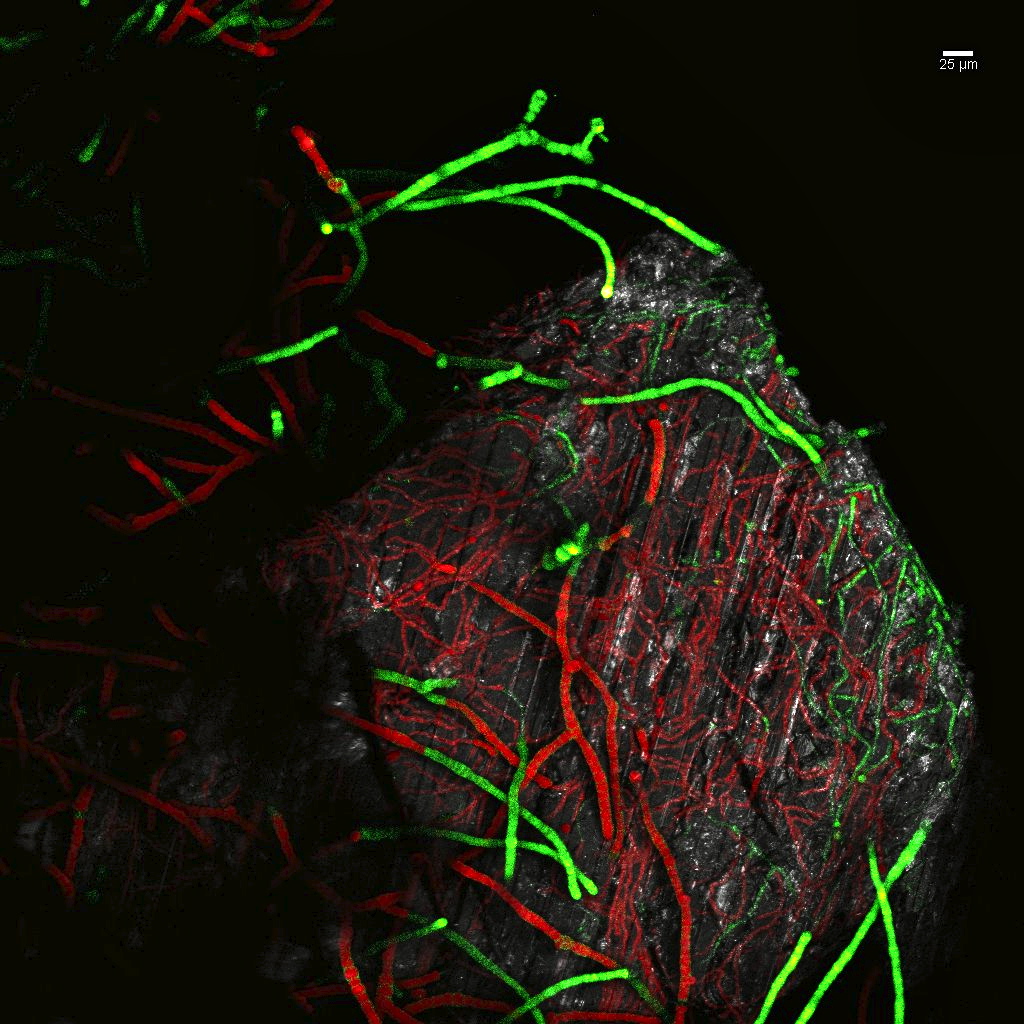ASU scientists discover how one microorganism erodes coral reefs

Photo credit: Freeimages.com
Coral reefs and hard-shelled sea creatures such as oysters and mussels are constantly being threatened, not only by the detrimental effects of stressors such as climate change and habitat loss, but also by microorganisms.
Researchers from Arizona State University have discovered how a particular type of cyanobacteria, a photosynthetic microbe, is able to bore into and live within solid carbonates, the main mineral that makes up coral skeletons and seashells — hastening their erosion and causing trouble for shellfish farmers.
Organisms that can do this, known as euendoliths, infest many kinds of rock, but they are especially adept at boring into rock types that consist of calcium carbonate, such as limestone and marble used to make sculptures, buildings and other man-made structures.
Brandon Guida, a School of Life Sciences doctoral candidate and lead author of the study, said: “The mechanisms by which these organisms can excavate carbonates and live inside rocks were, until now, a real mystery that seemed to go against the laws of chemistry. But now we have a better idea how they do it.” Their findings confirm several previous hypotheses.
Guida and his mentor, Ferran Garcia-Pichel, dean of Natural Sciences with the ASU College of Liberal Arts and Sciences, published their findings in this week’s early online edition of the scientific journal Proceedings of the National Academy of Sciences.
The scientists found that these rock-busting microbes orchestrate the activities of many cells in a coordinated way to transport mineral calcium to the surface, much like a conveyor. This type of cell-to-cell calcium transport has never been observed in bacteria before.
Too much calcium inside any cell can be toxic, and all known life forms keep it at very low levels inside. However, this particular cyanobacterium can move a lot of calcium through its cells. To prevent calcium from becoming toxic in most cells, they develop a few special cells — a type of “calcium depot” — also never seen before, to help store and regulate the release of the calcium in an organized fashion.

A laser confocal microscope image showing cells full of calcium (green) and cells with normal intracellular calcium, which can undergo photosynthesis (red) while infesting a piece of calcium carbonate (gray). Both boring and non-boring bacterial filaments are visible: those extending out of the chip are much larger in diameter. Calcium accumulation is seen mostly toward the ends of filaments. Image credit: Brandon Guida
"The level of cellular specialization and organization observed in this single bacterium is remarkable. Our research here supports the idea that bacteria are not just simple unicellular organisms but can be sophisticated, organized and truly multicellular," Guida added.
“The implications of these findings for cell biology and the environment go beyond this particular study,” said Garcia-Pichel, co-author of the study and professor with the School of Life Sciences. “These microorganisms teach us how one can use light energy to transport materials at a small scale, and how to efficiently engineer processes that may be of use in geotechnics, or put to work as targeted decalcifying agents. After more than 3 billion years of evolutionary tweaking, microbes often provide us with such learning moments.”
While this research answers many questions, more remain, such as why these microbes bore in the first place and how can they survive the intracellular calcium concentration the scientists do observe. The researchers say the next steps will be to look at the genes used by this cyanobacterium and to study whether these bacteria are actually consuming the carbon in the rock as well.
"We now hypothesize that the observed calcium transport is only part of the picture and that these microbes may actually be using the carbon released during boring process in photosynthesis, essentially eating the rock, which would be pretty awesome," Guida said.
More Science and technology

ASU water polo player defends the goal — and our data
Marie Rudasics is the last line of defense.Six players advance across the pool with a single objective in mind: making sure that…

Diagnosing data corruption
You are in your doctor’s office for your annual physical and you notice the change. This year, your doctor no longer has your…
Large-scale study reveals true impact of ASU VR lab on science education
Students at Arizona State University love the Dreamscape Learn virtual reality biology experiences, and the intense engagement it…

